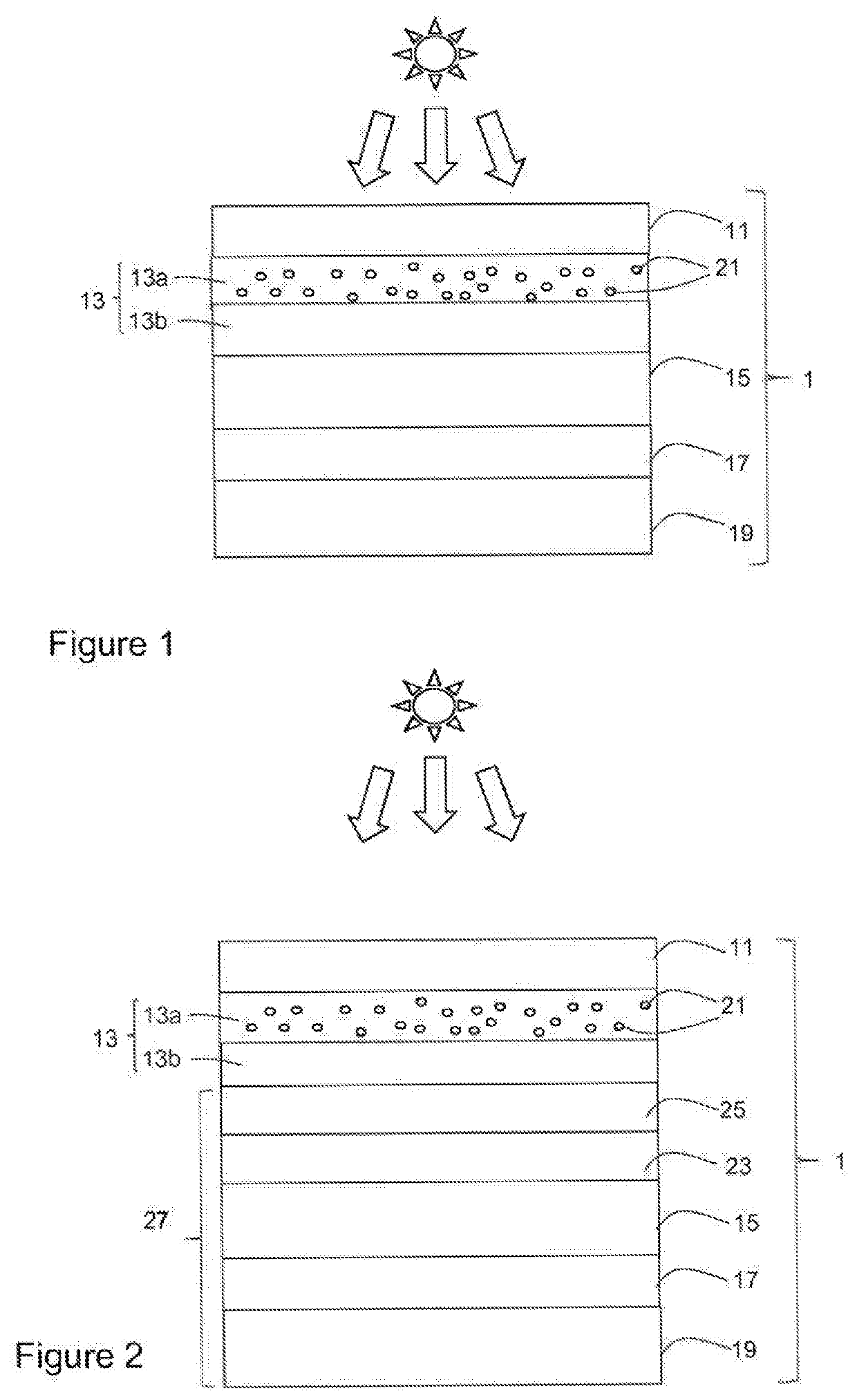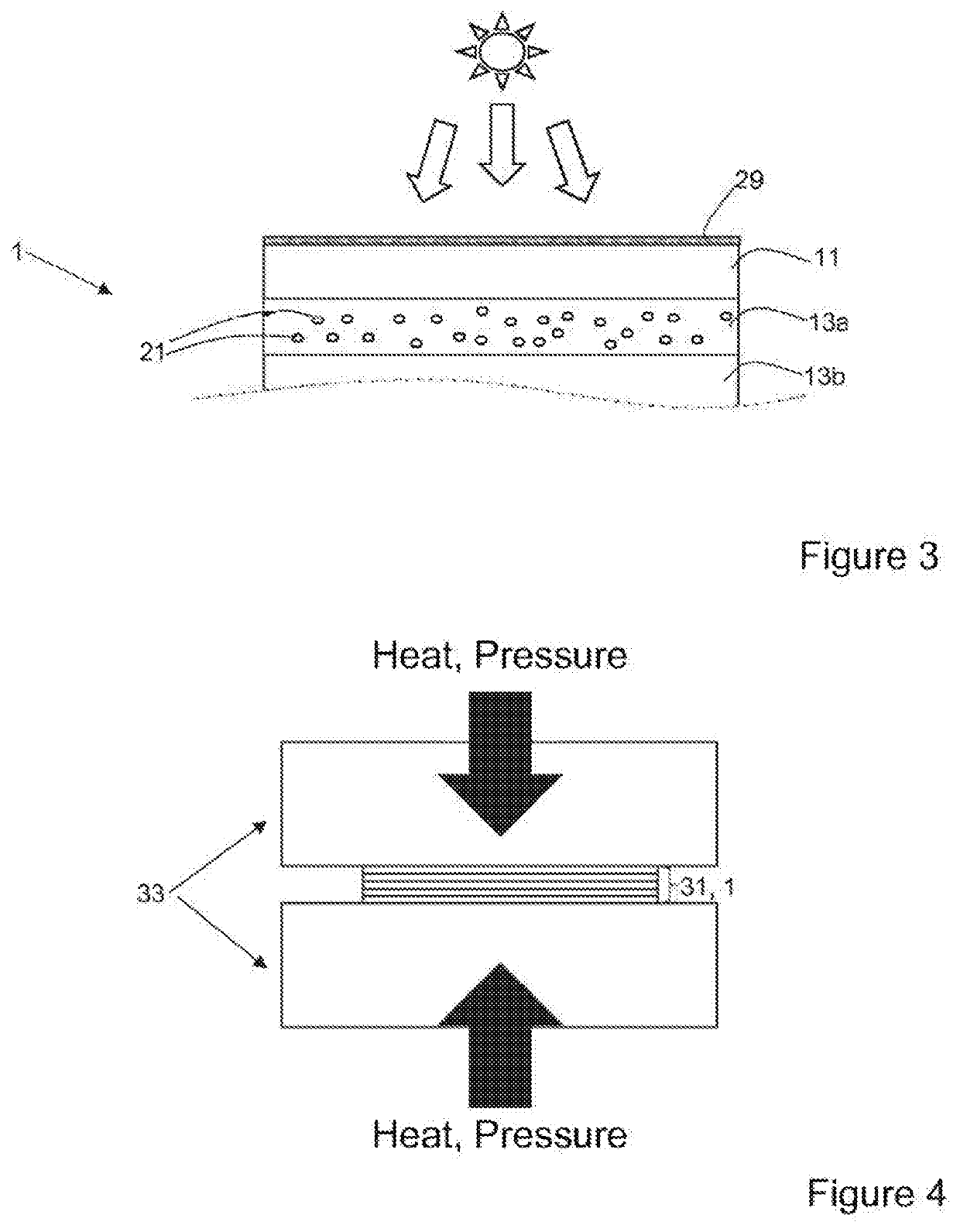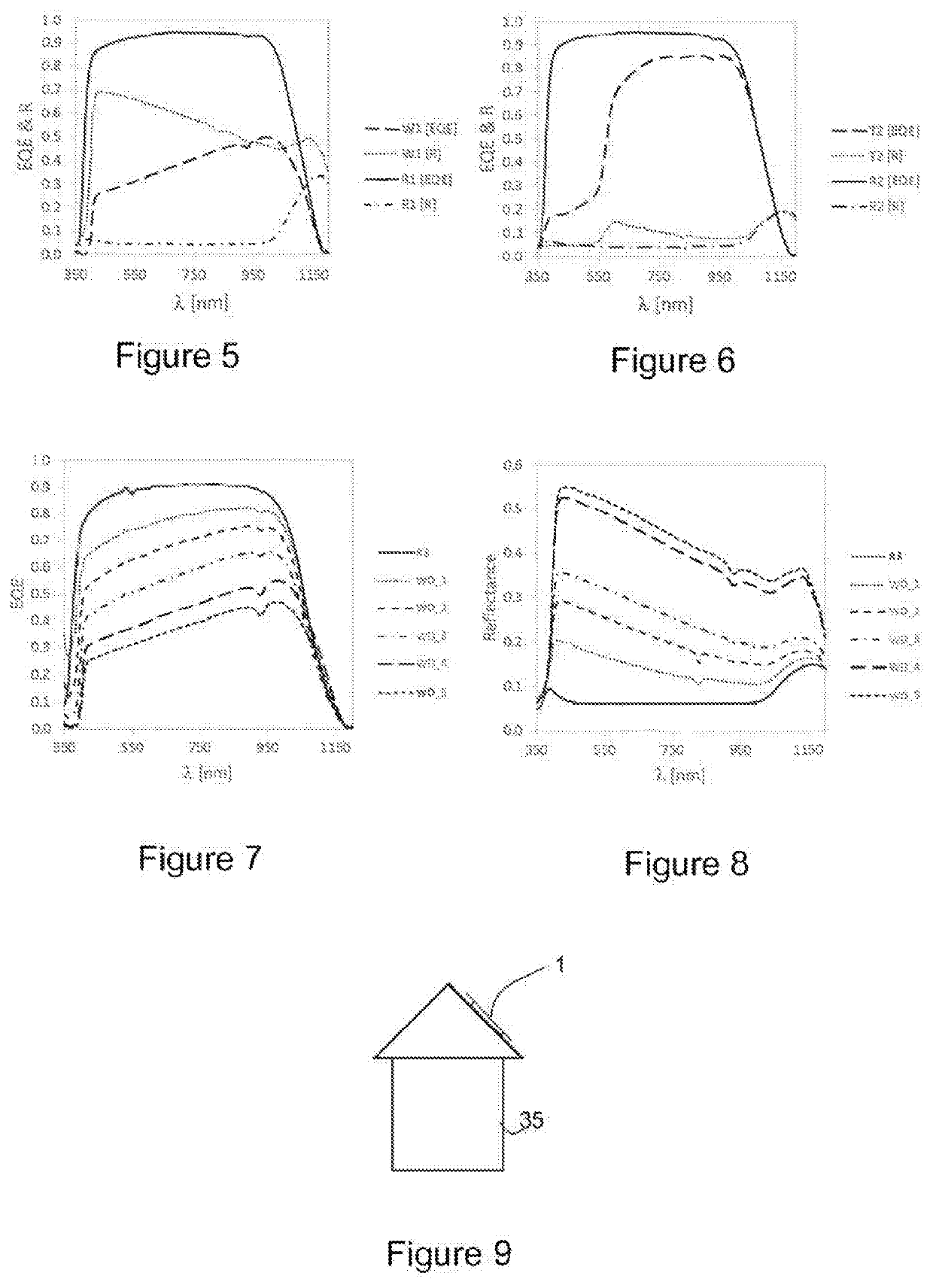Photovoltaic modules and method of manufacture thereof
a technology of photovoltaic modules and photovoltaic cells, applied in the field of photovoltaic cells, can solve the problems of inability to directly use them, inability to apply extra layers to modules, and complex prior art solutions, so as to prevent migration and agglomeration, facilitate manufacturing, and high viscosity
- Summary
- Abstract
- Description
- Claims
- Application Information
AI Technical Summary
Benefits of technology
Problems solved by technology
Method used
Image
Examples
Embodiment Construction
[0059]It should be noted in the following that, unless explicitly stated that a particular layer is disposed directly on the adjacent layer, it is possible that one or more intermediate layers can also be present between the layers mentioned. As a result, “on” should be construed by default as meaning “directly or indirectly on”. Furthermore, patterning of certain layers, connectors and so on are not represented since they are well-known to the skilled person.
[0060]FIG. 1 illustrates a first embodiment of a photovoltaic (PV) module 1 according to the invention.
[0061]This module 1 comprises a front sheet 11, on the light incident side of the module 1, intended to be illuminated when in use (as indicated in the figures by means of a sun symbol), and a back sheet 19, on the opposite side of the module 1 to the front sheet 11. The front sheet may be glass, transparent ceramic, polymer or any other convenient substantially transparent material, and the back sheet may be metal, glass, cer...
PUM
 Login to View More
Login to View More Abstract
Description
Claims
Application Information
 Login to View More
Login to View More - R&D
- Intellectual Property
- Life Sciences
- Materials
- Tech Scout
- Unparalleled Data Quality
- Higher Quality Content
- 60% Fewer Hallucinations
Browse by: Latest US Patents, China's latest patents, Technical Efficacy Thesaurus, Application Domain, Technology Topic, Popular Technical Reports.
© 2025 PatSnap. All rights reserved.Legal|Privacy policy|Modern Slavery Act Transparency Statement|Sitemap|About US| Contact US: help@patsnap.com



